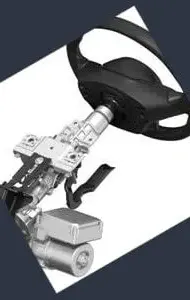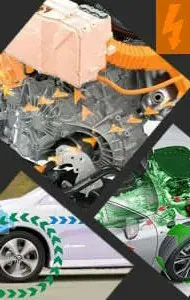Steering

Course Overview
This course describes and analyses different types of steering systems that are used on passenger cars and SUVs, either assisted systems as completely mechanical systems.
Accurate steering degrees involved in the car geometry are essential for the proper operation of the steering, suspension and also for the preservation of it and all the related components such as tires, ball joints, shock absorbers and so on.
Several manufacturers apply technologies where the rear axles intervene in the driveability of the direction that the vehicle describes. These are called rear-assisted steering systems and they’re also described and analysed in the course.
The main objectives of the course are:
- Knowing the geometry of the steering and its main degrees.
- Analysing how they affect the vehicle’s performance and stability levels.
- Knowing the types of assisted steering systems applied in the vehicle.
- Knowing the procedures to correct the gaps in the rack and pinion mechanisms.
- Knowing the repair procedures of the steering components.
- Providing the student with the skills to diagnose and repair faults related to the steering systems.
- Knowing the technologies used on rear-assisted steering systems.
Course Topics
1.- General
1.1.- Introduction
1.2.- Main components of the system
1.3.- Types of steering based on assistance
1.4.- Knowledge test
2.- Mechanical steering
2.1.- Endless screw
2.2.- Rack drive
2.3.- Steering ball joints
2.4.- Bearings
2.5.- Seals of sealing
2.6.- Knowledge test
3.- Hydraulic power steering
3.1.- Power steering fluid
3.2.- Mechanical activation of the hydraulic pump
3.3.- Electric drive of hydraulic pump
3.4.- Knowledge test
4.- Electric power steering
4.1.- Assistance in the rack
4.2.- Assistance in the steering column
4.3.- Knowledge test
5.- Directional rear axles
5.1.- Introduction
5.2.- Definition of a directional rear axle
5.3.- Evolution of the systems of directional rear axles
5.4.- 4Control system of Renault
5.5.- Knowledge test
6.- Geometry of the axes
6.1.- Introduction
6.2.- Parallelism (Convergence-divergence)
6.3.- Fall angle
6.4.- Angle of advance
6.5.- Output angle
6.6.- Example of adjustment on a Škoda Octavia Scout 2.0 TDI CR 140 HP
6.7.- Example of adjustment in a Renault Laguna III with 4Control system
6.8.- Knowledge test
7.- Maintenance and repair interventions
7.1.- Endless screw steering box
7.2.- Mechanical steering with rack drive
7.3.- Hydraulic power steering with mechanical pump drive
7.4.- Hydraulic power steering with electric pump drive
7.5.- Electric power steering
8.- Self-assessment
8.1.- Self appraisal
Average Duration
5h 50m
Access This Course
Get access to this course and 30+ more topics by subscribing.
Subscribe to Access All Online Courses
We provide access to all of our online courses for 12 months with a one-time purchase.
£199 ex.VAT per year


